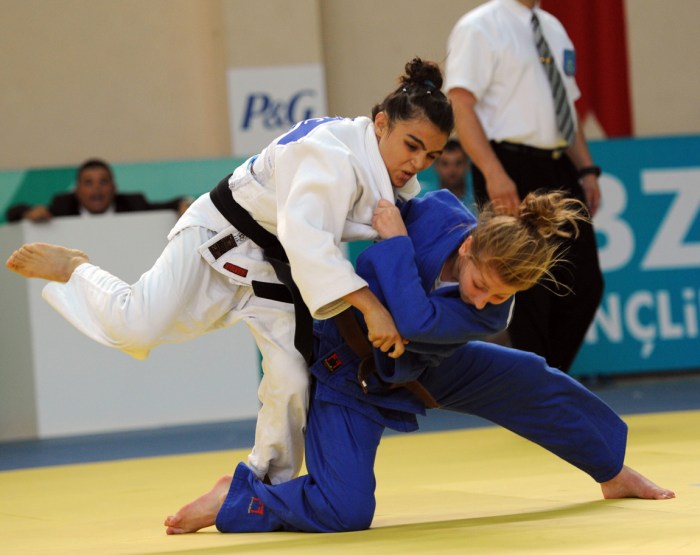Unarmed combat sport using holds and leverage – Unarmed combat sports using holds and leverage are a captivating blend of physical prowess, technique, and strategy. Rooted in ancient traditions, these sports have evolved into a dynamic and competitive arena where practitioners engage in grappling techniques to subdue their opponents.
This article explores the historical origins, key principles, major disciplines, training methods, competitive aspects, physical and mental benefits, and cultural impact of unarmed combat sports using holds and leverage.
Historical Origins of Unarmed Combat Sport Using Holds and Leverage

Unarmed combat sports emphasizing holds and leverage have ancient roots, with evidence of grappling techniques found in various cultures throughout history. In ancient Greece, pankration, a brutal form of unarmed combat, allowed the use of holds and submissions.
In Japan, the origins of Judo and Jiu-Jitsu can be traced back to the feudal era, where samurai developed grappling techniques for self-defense and combat.
Similar grappling techniques were practiced in other parts of the world, such as wrestling in Europe and Shuai Jiao in China, further demonstrating the universality of these unarmed combat forms.
Key Principles and Techniques
Unarmed combat sports using holds and leverage are governed by fundamental principles that emphasize control, leverage, and efficiency.
- Control:Establishing and maintaining control over the opponent’s body position and movement.
- Leverage:Using the opponent’s body weight and momentum against them to amplify the effectiveness of techniques.
- Efficiency:Applying techniques with minimal effort and energy expenditure.
Common techniques employed include:
- Joint Locks:Applying pressure to the opponent’s joints to cause pain or submission.
- Throws:Using the opponent’s momentum to unbalance them and take them to the ground.
- Takedowns:Bringing the opponent to the ground from a standing position.
Major Disciplines and Variations, Unarmed combat sport using holds and leverage
Within the realm of unarmed combat sports using holds and leverage, several primary disciplines have emerged, each with unique characteristics and rules.
- Judo:A Japanese martial art that emphasizes throws and takedowns, with a focus on self-defense and physical conditioning.
- Brazilian Jiu-Jitsu:A grappling-based martial art that originated in Brazil, known for its focus on ground fighting and submissions.
- Wrestling:A competitive sport that involves various techniques to take down and control an opponent, with freestyle and Greco-Roman being the most common styles.
FAQ Corner
What are the fundamental principles of unarmed combat sports using holds and leverage?
The fundamental principles include balance, leverage, timing, and control. Practitioners aim to gain an advantageous position over their opponents, using their body weight and momentum to execute techniques effectively.
What are some common techniques employed in these sports?
Common techniques include joint locks, throws, takedowns, and submissions. These techniques are designed to control or immobilize opponents, forcing them to submit or concede defeat.
How do these sports contribute to physical fitness?
Unarmed combat sports using holds and leverage offer a full-body workout, improving strength, flexibility, cardiovascular health, and coordination. They also enhance balance, agility, and reaction time.

